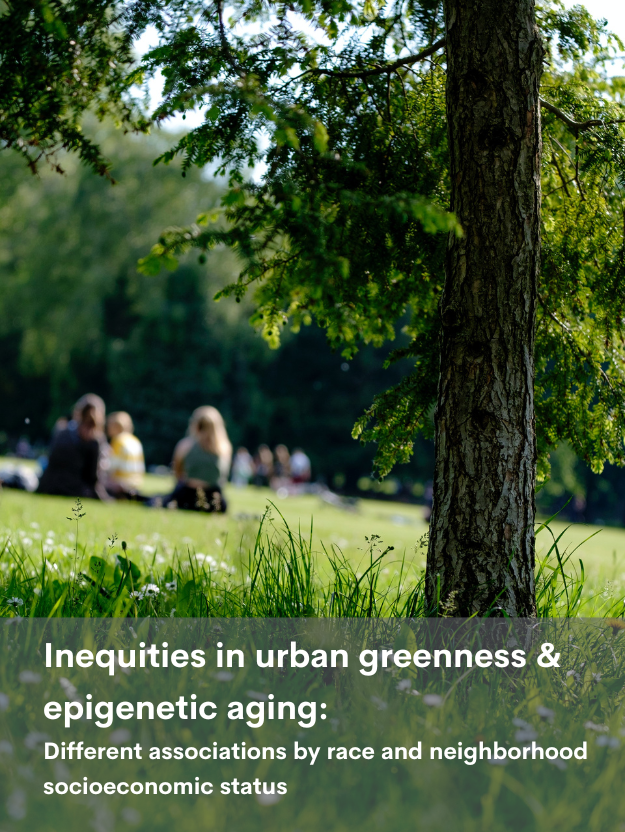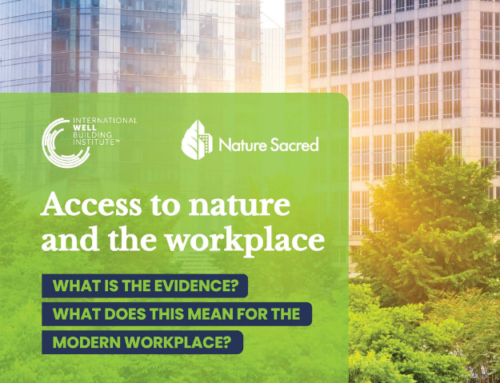Inequalities in Urban Greenness and Epigenetic Aging

More than half of the world’s population now lives in urban areas, and it is projected that around 68% will live in urban areas by 2050 (1). Urban green space (greenness) including parks, green roofs, and community gardens provides critical ecosystem services, and their potential benefits to healthy aging (including better cardiovas- cular health and lower mortality) were documented in the literature (2–5). Although potential pathways, including physical activity and social network and interaction, have been suggested to partially explain how surrounding greenness might affect health outcomes (6–8), the underlying molecular biological mechanisms of these as- sociations remain unclear.
One possible mechanism is epigenetic modifications, such as ab- errant DNA methylation levels, which are associated with both en- vironmental exposures and health conditions. Accumulated exposures to environmental factors can stimulate DNA hyper- or hypomethylation over time to affect human health (9, 10). Epige- nome-wide association studies have identified residential green- ness-associated differently methylated regions that showed
enrichments in physical activity– and allostatic load–related bio- markers, mental health, metabolic disease, and neoplasms (11, 12). A summary biomarker, DNA methylation–based biological age (epigenetic age), has been proposed as a predictive marker of age-related health outcomes. This is supported by multiple previous studies of epigenetic age that observed associations with cardiovas- cular disease (CVD), cancer, and mortality (13–15) as well as various health-related lifestyle and exposure variables (16). Expo- sure to greenness has been rarely linked with epigenetic age except for one cross-sectional study (17). Furthermore, no studies have examined the role of race and sex in the association between greenness and epigenetic age that are important to understand and reduce disparities in greenness exposure and its benefits (18, 19). Here, we conducted the first longitudinal study to examine the as- sociations between long-term greenness exposures and epigenetic age and then evaluate race and sex differences as well as effect mod- ification by neighborhood deprivation.





